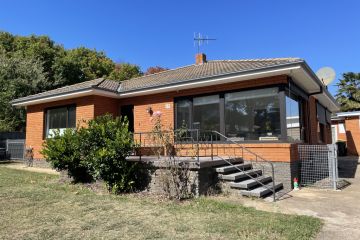Financing your first investment property

Establishing a personal budget and following an established financial plan are easier than you think.
Set an investment budget
It is important to review your personal budget prior to investing. This will allow you to assess the amount of debt you can take on and the mortgage repayments you can afford if the rental income does not cover the total costs of the investment. This is a long-term commitment and the last thing you want is to have to sell your investment property prematurely due to cash-flow problems. Take into account potential income and lifestyle changes.
ASIC’s MoneySmart offers a handy online calculator for establishing a personal budget.
Mortgages for investment properties
Borrowing to invest more often than not becomes increasingly cost-effective over time as rental prices generally rise; the value of your property often increases (capital growth) and, normally, so does your personal income. Additionally, there is a range of property investment tax deductions you can claim. None of this negates the need for obtaining a well-structured mortgage loan that is compatible with your budget. Economic conditions (particularly interest rates) can change quickly; fluctuations are part and parcel of the real estate market and personal circumstances are not always in our control.
Domain Group’s senior economist Dr Andrew Wilson encourages investors to shop around when looking to finance their investment property.
“A lot of people like to lock in fixed or variable loans and there is always the question: if the cycle is low in terms of interest rates, should you lock in your rates? In my opinion, because we have a very competitive environment with banks these days, [it’s best to] work your way through the banks to get the best variable rate you can.
“At least you’re secure in the long-term notion that your interest rates will rise and fall with the majority of others [mortgage holders]. There are still issues to do with mobility, swapping from fixed-term interest rates or fixed interest rates over fixed terms, which can have a cost to them.”
Along with mortgage considerations including fixed or variable interest rates, redraw facilities, offset accounts and repayment holidays, interest-only loans are a common property investor tool.
Interest-only loans for property investments
Property investors can choose an interest-only loan where repayments only address the loan’s interest. This arrangement keeps their repayments to a minimum. In theory, if there has been capital growth, the investor can sell off the property at a profit, while only ever addressing the interest costs.
As expenses relating to the money you borrow (including loan interest repayments) and outlay to manage an investment property are tax deductible, an interest-only loan still gains these taxation benefits.
These loans have associated risks because they rely on capital growth; by leaving the principal debt intact you are not adding any equity. They also tend to attract higher interest rate charges when compared to standard fixed home loans, or have a variable rate.
If there is no capital growth, or even capital decline, you will make a loss on your investment if you have to sell.
Choosing an interest-only loan is beneficial if you are using negative gearing and are looking to reduce your overall taxable income. If you want to build equity without relying on capital growth, or plan to move into the investment property as your primary residence in the future, an interest and principal repayment loan is advised.
Dr Wilson recommends preserving as much equity as possible in an investment property. ”If you are looking to buy another property, as your equity builds in your property portfolio, you should maintain as high a level of equity as you can,” Dr Wilson says. “As far as whether you go with an interest-only or interest and principal loan – I think that depends on individual circumstances.”
Using superannuation to buy investment property
There is detailed legislation surrounding the creation of a self-managed superannuation fund (SMSF) and using the SMSF to invest in residential real estate. Restrictions you should take into account include:
- The investment property must solely provide equity towards the fund member’s retirement
- Fund members or related parties cannot rent or live in the property
- The investment real estate cannot be purchased from a related party
- SMSF gearing attracts higher costs and the SMSF must provide the cash flow for the loan repayments
- You can only borrow money to maintain the property not improve it
- You cannot offset tax losses against your taxable income earned independently of your SMSF
Despite the restrictions, investing in property using a SMSF does garner significant tax advantages. The rental income earned on your investment property, or any capital gain made, will be taxed at a maximum rate of 15 per cent. If you own the property for more than one year the capital gain tax rate drops to 10 per cent. For more information on SMSFs and financing your first investment property, head to the ASIC MoneySmart website.
Investment property cash-flow analysis
Conducting a cash-flow analysis on your potential real estate investment requires you to look at the costs involved in purchasing the property and the resulting loan repayments, expected rental income and the resulting yield, and the ongoing maintenance costs. From there you can establish how much money you need to outlay each week or if in fact you are receiving a positive cash flow. Cash flow analysis is different to calculating net income or loss, which takes tax obligations into account.
To determine your weekly cash flow, subtract your total weekly ongoing costs from your gross rental income. Remember to factor in periods between tenants and consider the impact of future interest rate changes.
Purchase costs: include the sale price, conveyancing fees, legal costs, real estate agent fees, building inspections and stamp duty
Gross rental income: the cash amount you receive each week from tenants
Ongoing costs: the loan repayments, land tax, council and water rates, body corporate fees, insurance, maintenance costs and agent management fees
People often refer to rental yield (the annual gross rental income as a percentage of the property’s overall value) as a way of assessing a property’s investment value. It can be more telling to assess a property’s net rental yield (the annual net income as a percentage of the property’s overall value) as this takes into account ongoing expenses and cash flow.
Insurance for investment properties
A number of insurance costs need to be factored into your final budget analysis.
- Landlord insurance: Landlord insurance offers an important safety net for investors. It covers both the property’s building and internal structure (permanent fixtures) and it protects you in the event a tenant defaults on rental payments or damages the property. Additional contents insurance may be required if you are leasing out a fully furnished investment property. Make sure you check the fine print as to what is covered by the insurance inside and out. For example, if the property is near a creek or a river, it’s worth checking the exact definitions of flood and water damage. Also review whether the building insurance covers fixtures like permanent appliances, carpet, plumbing and cabling. Insurance policies vary significantly and some insurers separate building, landlord (tenancy payment default or damage to the property) and strata insurance. It is important to shop around and decide which policy best suits your circumstances.
- Mortgage protection insurance: This is a form of income insurance which covers you in the event you are not able to make required mortgage repayments due to unforeseen circumstances, including illness, injury, death or loss of employment.
- Lender’s mortgage insurance: This type of insurance is required by your financial lender if you are borrowing more than 80 per cent of the investment real estate’s value.
We recommend
We thought you might like
States
Capital Cities
Capital Cities - Rentals
Popular Areas
Allhomes
More







